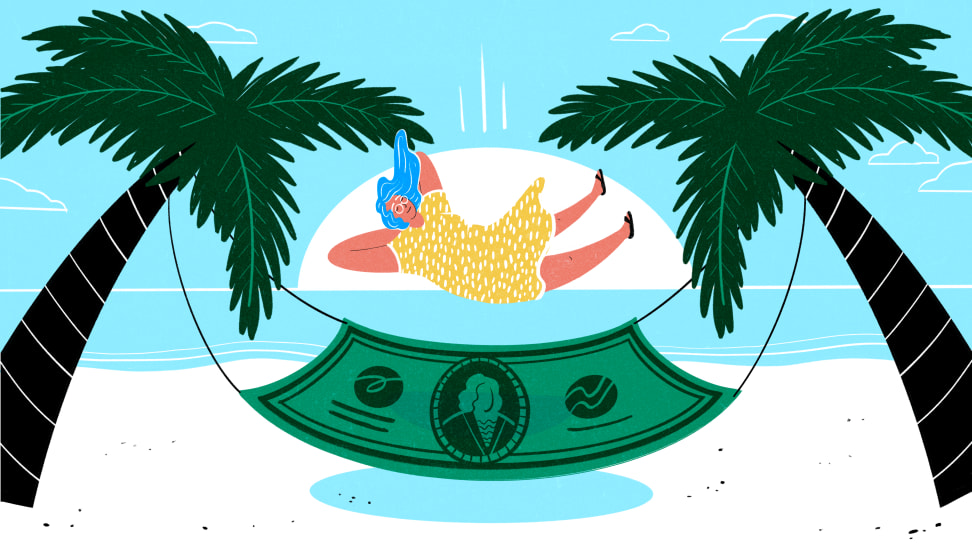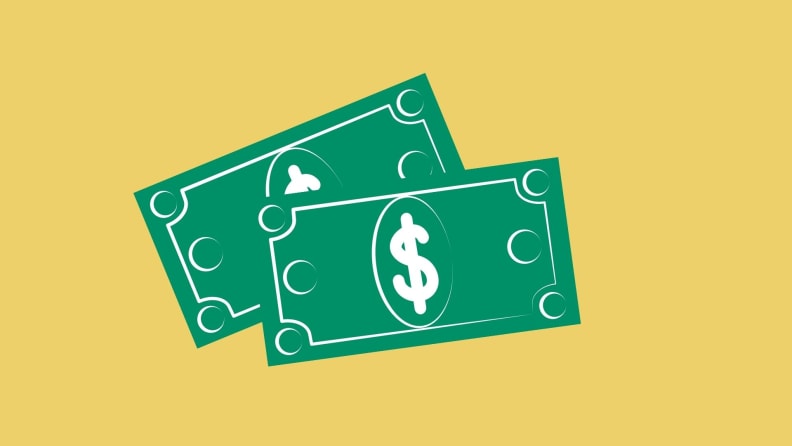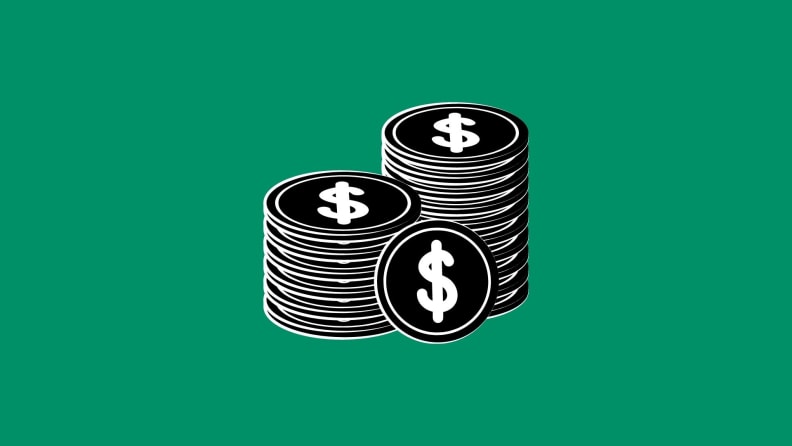How much money should women have in their bank accounts?
Plus, the next steps once you've built your emergency fund.
 Credit:
Reviewed / Tara Jacoby
Credit:
Reviewed / Tara Jacoby
Products are chosen independently by our editors. Purchases made through our links may earn us a commission.
While Jackie Cummings Koski was always "good" with her money, it wasn't until her 30s that she got her feet wet with investing beyond her 401(k). A longtime diligent saver, she was going through a divorce, and the thought of being a single mom was terrifying. While divvying up their assets, Koski realized there was a huge gap between what she and her husband had in their separate retirement accounts. While her then-husband had $120,000, she only had $20,000 for her nest egg.
"That was a wake-up call for me, and even though I felt like I had failed myself, I didn’t want to fail my daughter," says Koski, an author and financial literacy advocate. "I didn't want to end up in poverty like when I was younger. So, about two years of pulling myself together after the divorce, I decided to learn about money and investing."
After talking to a colleague, Koski learned the ins and outs through a nonprofit club called Better Investing. She retired with more than $1 million in the bank at age 49.
Koski's story certainly isn't a singular one. In addition to having less overall wealth, women tend to be more financially conservative than males. For one, they often squirrel away more of their funds into savings, and run into "cash drag." In other words, their emergency funds have more cushion than is necessary. And that “extra” money could be better put elsewhere.
"Women tend to be more risk-aware than men, meaning we’re more likely to recognize and prepare for risks before they happen," says Marie Thomasson, a certified financial planner and founder of Modern Assets, an L.A.-based financial planning firm for women. "Because women are the primary caregivers of all ages, we’re more aware of the possibility of stepping in and out of the workforce, career penalties that occur because of our caretaking nature, and lower wages that require us to save more simply to keep up."
Let's talk about how "cash drag" can hinder women's finances and a few steps they might take to dip their toes into investing.
How much does “cash drag” cost you?
The national average of savings accounts rates in the U.S. is 0.12% (yes, you read that correctly). It’s true that you need a certain amount of liquid savings for a rainy day (and we’ll get to that in a bit). But by avoiding investing or other moves, you're missing out on growth potential.
Inflation will eat away at a woman’s savings slowly but surely, Thomasson explains. "A dollar you save today will be worth roughly fifteen cents 30 years from now if you tuck it under your mattress," she says. "Investing is really just long-term savings, and it’s essential to do unless you plan on some major downsizing in the future."
A Magnify Money survey reveals that women tuck an average of 23.5% of their financial assets in CDs and savings. Men, however, keep about 15% in these liquid assets. While it might seem safer to stash money into a savings account, you miss out on big growth opportunities if you don't invest.
For example: Say you have $5,000. If you keep it in a savings account for 10 years, at the current average of 0.12%, you'll have about $5,060 in the bank. What would happen if you invested that $5,000 instead? With an average annual return of 8%, that $5,000 would double.
How much money do you need in a checking account?

Stash a month of living expenses in a liquid checking account.
So, how much is enough to keep in your everyday bank account? Thomasson recommends no more than a month of living expenses. Whenever you use your debit card, you're at risk for some type of theft. "You don't always have the luxury of waiting a few months while the bank investigates fraud to—hopefully—get your money back," Thomasson says.
How much money do you need in an emergency fund?

Save enough for an emergency fund that will see you through six months of pared-down living expenses.
Keeping about three to six months of basic living expenses will ensure you won’t need to pull money out of your retirement plan at the wrong time, Thomasson says. Experts typically recommend having a solid stash in savings before you begin investing. In the event of an unexpected expense or sudden job loss, you want to avoid tapping into your investments pre-emptively or even digging yourself into a dastardly pool of debt.
Money you invest isn't funds that you need today or tomorrow. It’s typically for long-term goals that might be decades away, such as your retirement. The more time you have to invest, the more time you'll have to weather the ups and downs. Historically, the average stock market return is about 10% annually.
Why are women weary of investing?

While investing comes with risk, it's not comparable to gambling.
Maybe you’ve just learned that you have some extra cash on hand. But investing can sound intimidating. You might have misconceptions about what it really is. For instance, that it's like gambling. While there is risk involved, historically, the average annual return for the last century has been about 10% before inflation. Compare that to your savings account’s less-than-1%—or even a high-yield savings account that may offer 0.60%—and you can see how investing can help your money grow in the long run.
Another misconception is that men are better investors than women. But there are actually a number of studies that reveal the truth: Women tend to overperform men when it comes to investing in the stock market.
Women might also get the wrong messages about investing from pop culture and the media. Plus, the fact that financial advising is pretty much a male-dominated industry doesn't help. "Investing is splashed across websites and movies as a high-risk, sometimes reckless activity that requires a high level of technical capacity to understand," Thomasson says. "Add to that the disproportionate representation of men in financial advisor capacities who often patronize women with regards to their investment acumen, and it’s no surprise that women are apprehensive about the entire industry."
These days, there are some bright spots, with more women-centric platforms like Ellevest and Girls on the Money popping up, and even individuals offering investing education for women, such as Amanda Holden of Dumpster Doggy.
Learn the basics about investing

You don't need to know everything—but you can learn about basic investments.
Investing can seem especially scary when you're first starting out. Begin with the basics: What does it mean to invest in stocks, bonds, or ETFs? What are some common strategies, such as asset diversification? And what is your comfort level with risk?
Pick up some knowledge by listening to podcasts or reading books. For starters, check out Erin Lowry's Broke Millennial Takes on Investing, Nancy Tengler's The Women's Successful Guide to Investing, and Tiffany "The Budgetnista" Aliche's Get Good With Money.
Or, like Koski, join an investing club. "I loved the idea of learning with others that were interested in the same thing I was," she says. "It ended up being the conduit for increasing comfort level with the stock market and putting the pieces of investing together."
And remember: It's not your job to know everything about investing; that's what professionals are for. If you have questions, you can work with a financial planner or investment manager.
Start with monthly contributions

Automate your monthly contributions once you've budgeted for the necessities.
To keep things simple, Thomasson recommends making monthly contributions that you won't miss—and don’t have to think too much about once you initially sort out the particulars. If you have an employer-sponsored retirement plan, such as a 401(k) plan, begin by investing, say, 5% of your pay, then ramp it up a percentage every few months. Of course, go this route only if the necessities are covered, and you’ve got that emergency fund to fall back on.
Self-employed? A good place to start investing is an IRA. The annual contribution limits for an IRA in 2021 is $6,000, and $7,000 if you're 50 and older. You can also look into other retirement accounts, such as SEP IRAs and Solo 401(k)s.
Begin with a conservative portfolio

Go with your own comfort level when dipping your toe into investing.
Thomasson recommends starting out with a conservative portfolio mix and making tweaks as your confidence grows. As there is an emotional element to money, investments that are known to be volatile might ramp up your fears and anxieties about taking the leap. A beginner’s portfolio might favor bonds and be lighter on stocks.
In Koski’s case, she dipped her toe further into investing by maxing out her tax-advantaged accounts—401(k), Roth IRA, and Health Savings Account (HSA), which can cover costs such as future medical expenses. Before that, she was contributing just enough to her 401(k) to snag her company match, and putting a little bit into a Roth IRA. "Knowing how quickly the money could grow by being invested in the stock market was a game-changer for me," Koski says.
